The quality of the water in the aquarium, the health of fish and plants, as well as the underwater landscape as a whole, depend on how well the nutrient soil is selected. But not all aquarists (especially beginners) delve into this topic and understand how this filler works, how it happens. Many do not cover the bottom in the tank at all. And this is a huge mistake, because nutrient soil is an indispensable biological filter.
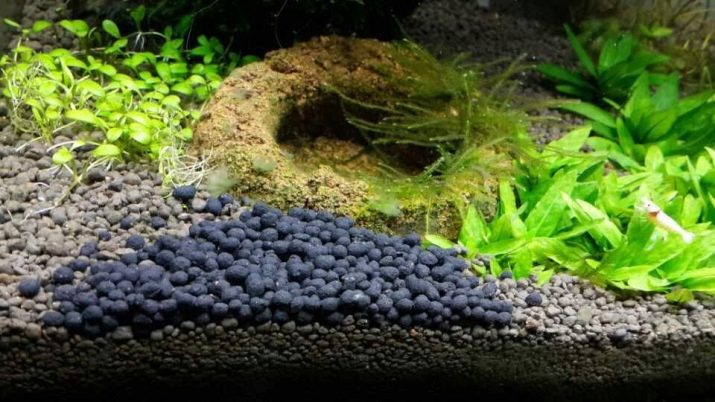
Features
Aquarium is just an imitation of a natural reservoir, but it must be as reliable as possible so that the biosystem lives and its inhabitants do not suffer. This means that all the requirements put forward to the real ecosystem can rightly be attributed to the aquarium.
Nutrient soil for aquariums has a number of functions:
- it is the basis for fixing plants;
- it is considered a natural environment for fish and other microorganisms inhabiting an artificial mini-pond;
- it is biologically active;
- It is considered a natural repository of caviar.
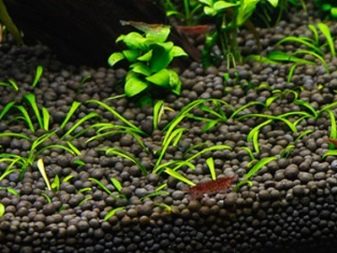
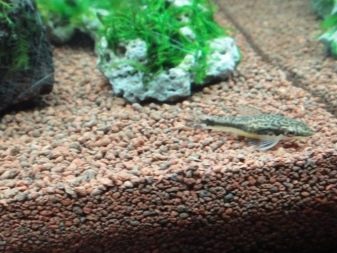
If the substrate (namely, the so-called soil) is correct, many beneficial bacteria will settle in it. They decompose feed residues and fish secretions to simple minerals. It turns out that the bacteria contained in the nutrient substrate cleanse the liquid of nitrates and ammonia. Water stops smelling bad, looks clean. But bacteria can appear not in any composition, but only in a substrate with valuable characteristics.
Soil for aquarium fish and flora is characterized by porosity, bacteria function in the pores. The sizes of soil particles cannot be more than 3-5 mm.But pebbles and similar material about 7 mm in size no longer fit: it’s hard for the fish to toss it. Too small particles such as sand will coalesce, the soil will cease to “breathe”. And in the sand layer hydrogen sulfide and methane, highly toxic substances, are certainly formed.
Another mistake is to put not rounded soil at the bottom. Angled pebbles can be dangerous to underwater creatures. The rounded particles do not adhere tightly to each other, they are not dangerous for the inhabitants, stagnant phenomena between them are practically excluded.
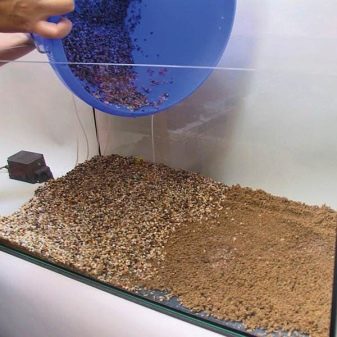

Mandatory soil requirement - equal particle size. If the pebbles are mixed with sand, the distance between them will be filled with smaller elements, which is also fraught with stagnant formations.
An aquarium nutrient layer cannot be too light, quartz, basalt and granite fillers are preferred. Plants hold on tightly, and it is easier to siphon them.
Advantages and disadvantages
One of the most preferred types of soil is considered to be a claydite substrate. It is neutral, it is a natural product, suitable for the reproduction of valuable bacteria. Expanded clay is not dangerous for fish, because its surface is rounded. This is a well-known natural absorbent, because it copes with water purification.
The advantages of expanded clay include:
- ease of cleaning the tank;
- structure porosity;
- surface smoothness;
- biofunctionality;
- elimination of excess fertilizers and organic matter;
- chemical neutrality;
- good circulation;
- aesthetics and natural appearance.
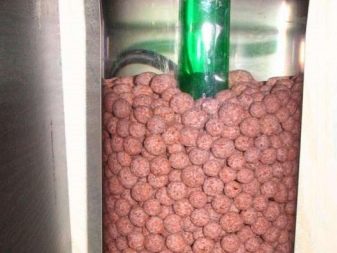
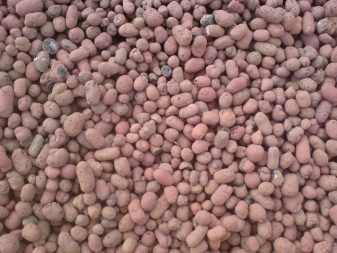
But claydite has its drawbacks - it is too light, because not all types of plants can be planted in such soil. And there are no nutritional components in it. Therefore, many aquarists today quite rightly turn to special nutritional compounds that are sold in pet stores.
These are valuable nutrient mixtures with organic and mineral inclusions in the formula. They are used in conjunction with neutral soil (the same expanded clay) in the substrate. The product usually includes porous components, valuable living bacteria, long-acting fertilizers or granules that dissolve quickly in the aquatic environment.
Nutrient soil inhibits the growth of algae, optimizes the bioactivity of beneficial bacteria. But it also has disadvantages - the lower layers can sour, so the use of such a substrate without neutral soil is impossible.
Therefore, you can safely buy expanded clay and nutritional composition from a good manufacturer, combine into one useful substrate and lay on the bottom of the tank.


Rating of the best manufacturers
Options for finished soils are not so few in pet stores.
Brand ratings may look like this.
Power sand special m
As part of the product porous components, mineral fertilizers, peat and microorganisms. This is an excellent nutrient substrate for any mini-ecosystems, stimulating the growth and development of plants. You can use the product as a high-quality shrimp feed base. The substrate provides favorable conditions for the life of the inhabitants of the aquarium, guarantees excellent circulation in it, provides a nutrient base for bacteria. The only disadvantage of this product is its high cost.

"Deposit"
The mixture is rich in organic matter and minerals. It contains the most important impurities for plants and high-quality granules with quick dissolution. Minus "Deponita" - in the possible acidification of the lower layers and combinations only with empty soil variations.

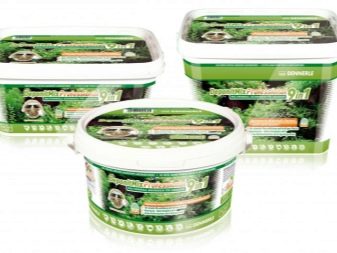
Coral baby
It is produced by different manufacturers, but there are no special differences between the products. Such a substrate is suitable for pseudo-marine aquariums. Not everywhere it can be used, because the crumb increases the water hardness. The structure of the coral chips is porous, it will not harm the fish, its appearance is beyond criticism. But at the same time, the outer layer of the substrate may darken.
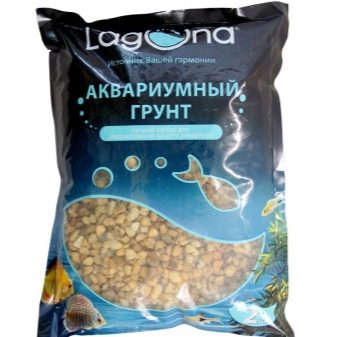

Among other soil producers, Russian aquarists have identified brands such as Tetra, Azoo, Hagen and JBL Sansibar.
What to do with your own hands?
There are many recipes for preparing nutritious soil, but all of them in one way or another repeat each other. Some self-made primers are suitable only for certain types of aquariums, others can be called universal.
A popular recipe for two-layer soil has the following composition:
- coal (natural birch or activated granular);
- peat;
- clay;
- sorbent;
- fine pebbles or coarse sand;
- coconut fiber or finely chopped foliage.
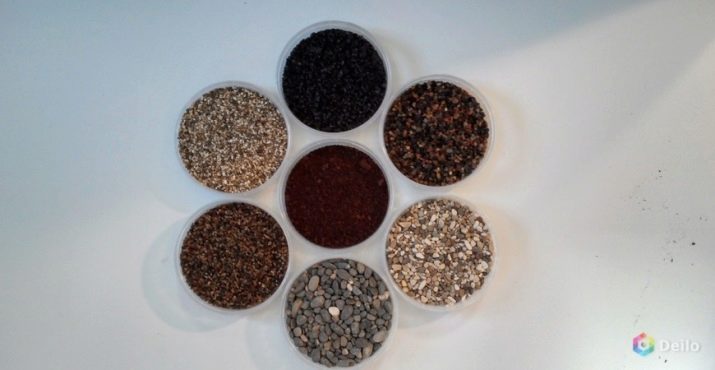
Coal is an adsorbent, which is important for neutralizing the decomposition of organic matter, as well as cleaning the layer of elements harmful to it. But it is important to understand that coal has an inherent release into the environment of collected harmful elements. Therefore, experts advise changing the whole soil every 8-10 months.
Clay can be different, but for the aquatic environment it is preferable to choose gray. There is a lot of iron in red clay, which is not useful for many types of fish. In forest or lake clay there is a bit too much humus; it entails rapid growth of algae. But the gray clay formula meets the demands of literally all types of inhabitants of the underwater world.
Necessary for homemade nutritional composition and sorbent. More often choose granulated vermiculite. This layered mineral tends to retain nutrients in the soil, so that they are not in a hurry to quickly dissolve in water.
Peat supplies valuable organic matter to the ground, which the aquarium flora absorbs by the root method. If you decide to use river sludge, keep in mind that its large doses lead to acidification of the soil. Natural forest peat also sins with acidification of the soil, therefore it is more logical to buy pressed peat in granules or tablets.
Finally, organic. Fallen foliage is one of the common components of a home-made nutrient substrate. But if you take the leaves of linden or oak, a lot of tannins will stand out in the aquatic environment. Maple leaves, for example, will decompose very slowly, and aspen, on the contrary, too quickly.
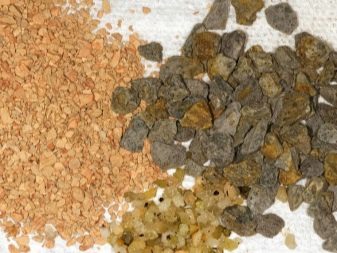
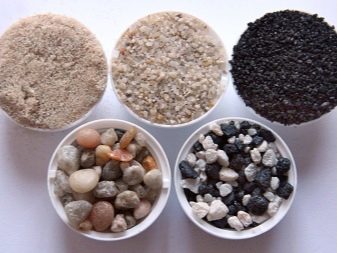
Therefore, it is sometimes easier to abandon fallen leaves in favor of cutting coconut fiber.
Laying rules
There are several schemes for laying soil in the aquarium. For example, a three-layer scheme is known, according to which many conservative aquarists prefer to lay soil.
- Bottom layer. This is laterite or gravel. There is a lot of iron in laterite, and clay in gravel. The thickness of the layer is about 3-5 cm. Some experts add clay balls with fertilizers to this layer, some prefer to add a mixture of trace elements. It is desirable that there is enough iron in this mixture, always in chelated form (for accessibility to fish). But iron sulfate should not be used, sulfates change the acidity of water.
- Middle layer. It is represented by land with peat addition, the layer thickness is not more than 3 cm. If it is increased, the soil will be susceptible to decay. If there is a lot of organic matter in the soil, mix it with sand.
- Upper layer. This is from 3 to 5 cm of fine gravel in the sand mixture. The layer is created with the aim that the land and peat do not make the water cloudy. It uses all those beautiful pebbles that you liked at the pet store.
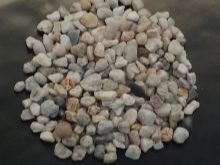
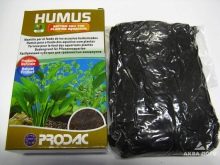
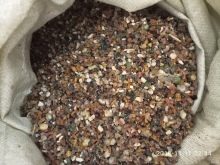
Remember that it is important to flush the soil in the aquarium. It does not matter if the capacity is 100 liters or 300 liters, the requirements are the same for them. Cleaning and washing are reduced to the fact that the substrate is siphoned. A siphon is a hose in which a vacuum is created, with the help of which dirt is drawn from the water.
And some important background information for aquarists.
- Glass primer handsome and even chemically neutral, but still not worth taking it. The glass surface is not considered porous, and it is in such structures that bacteria that are important for the flora and fauna of the aquatic ecosystem develop. The nutrient composition for the underwater garden in such soil will not be fixed, it will be washed.
- Be sure to evaluate the nature of the fish. If your pets strive to rummage below, such inhabitants need coarse soil, otherwise the water in the tank will be cloudy all the time. But there are also such fish that literally burrow into the ground and stay in the soil for a long time - coarse-grained flooring is not suitable for these pets.
- Regarding the color of strict prohibitions and obvious preferences there. The only thing is that the blue pebbles in the aquarium, densely planted with plants, will look out of place. For the rest, rely on the laws of color.
- Artificial soil - Another popular pet store product. However, this mixture is more suitable for Dutch aquasystems in which plants displace fish. For shrimp, it is also suitable.
- Soluble materials, the same limestone, are not used as a substrate. River sand is also not used. The color layer looks beautiful, but soon the dye is washed away, and the water becomes colored.
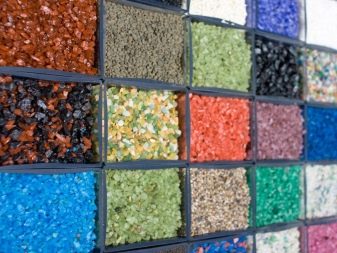
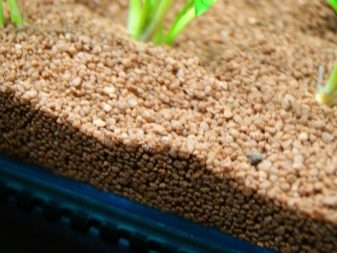
Interestingly, the aquarium is able to do without soil at all, and plants are planted at the bottom in small pots. The plants themselves (like creeping echinodorus) are used as bedding.
For nutrient soil for the aquarium, see the next video.










